Seeds from one of New Zealand’s most mysterious plants have been planted in central Wellington – but it’ll be at least five years before it’s known if the translocation has been successful.
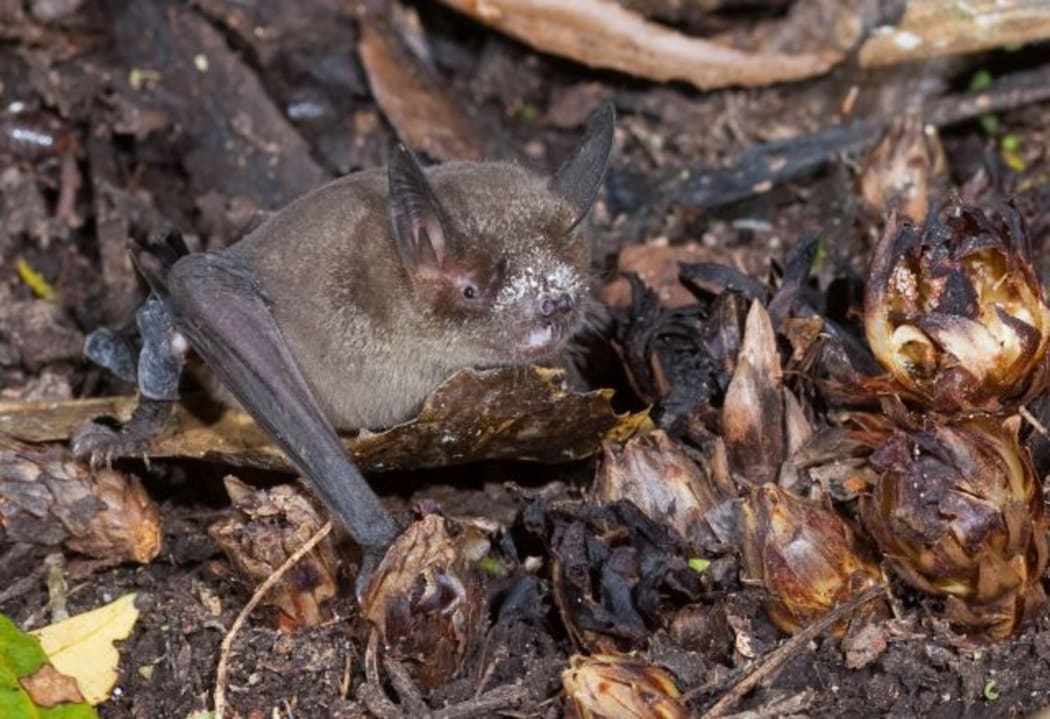
A short-tailed bat enjoying nectar-rich Dactylanthus flowers. Dactylanthus is the only chiropterophilous geoflorous plant in New Zealand. In plain English that's a bat-pollinated ground-flowering plant. Photo: Nga Manu Trust / David Mudge
Find Our Changing World on Apple Podcasts, Spotify, Stitcher, iHeartRADIO, Google Podcasts, RadioPublic or wherever you listen to your podcasts
Te Pua o te Rēinga, or flower of the underworld, is New Zealand’s only fully parasitic flowering plant. It parasitises the roots of trees such as five-finger and lives underground until it flowers, when its nectar-laden flowers push through to the forest floor.
Also known as waewae Atua, the toes or fingers of the Gods, and Dactylanthus taylori, pua o te Rēinga is naturally pollinated by pekapeka, short-tailed bats.
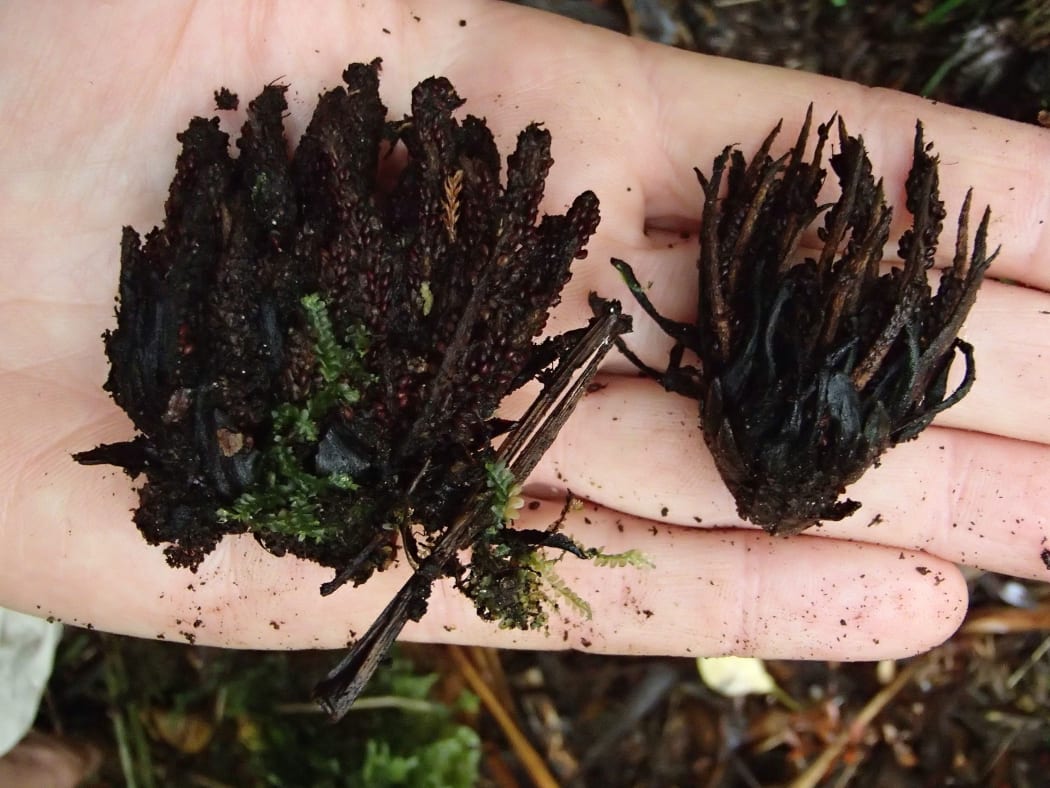
Last year's Dactylanthus flowers contain hundreds of large brownish-red seeds. Photo: RNZ / Alison Ballance
Natural populations of pua o te Rēinga have disappeared from the Wellington region, but efforts are being made to return the species to its former range.
The translocation involves, for the first time in a conservation project, all six iwi from across the Greater Wellington region: Rangitāne, Ngāti Kahungunu, Taranaki Whānui, Ngāti Toa Rangatira, Te Āti Awa ki Whakarongotai and Raukawa.
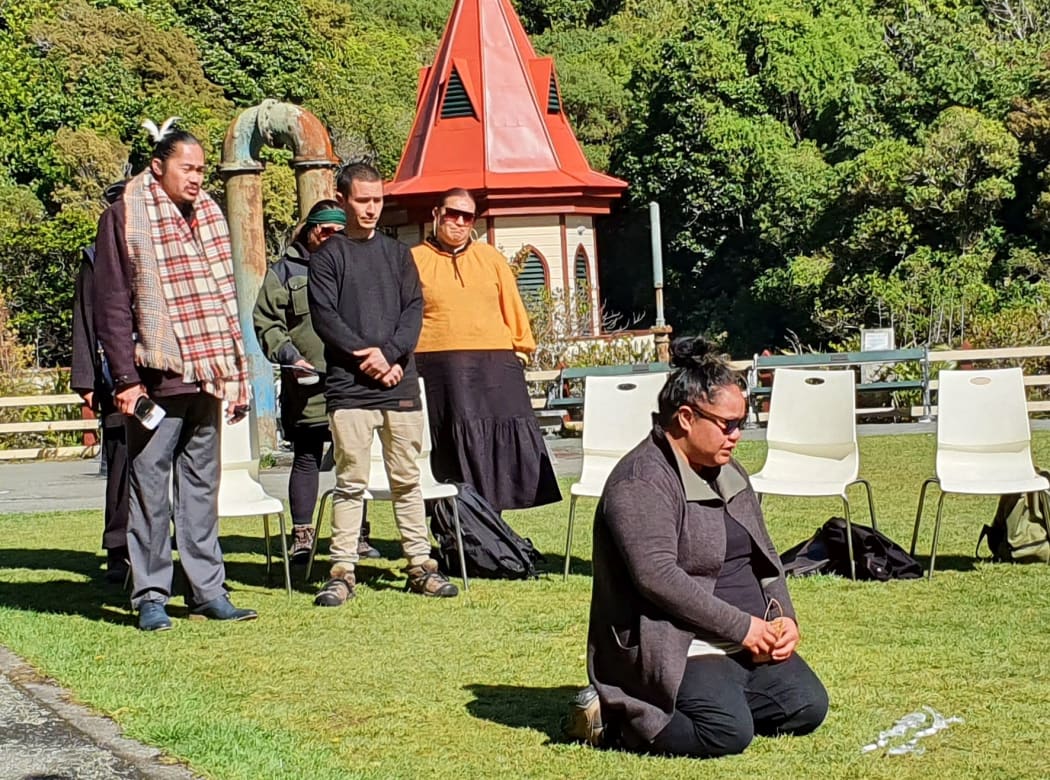
Small packets of Dactylanthus seeds collected from Pureora forest are gifted to Zealandia ecosanctuary. Photo: RNZ / Alison Ballance
Holden Hohaia is one of the local iwi, te hau kāinga, with affiliations to Te Āti Awa and Taranaki Whānui
“It brings all together all our iwi, all our whanaunga on our eastern and western side, and gets us working on a kaupapa together,” says Holden. “Te pua o te Rēinga actually unites us in a shared kaitiaki responsibility, so that’s awesome.”
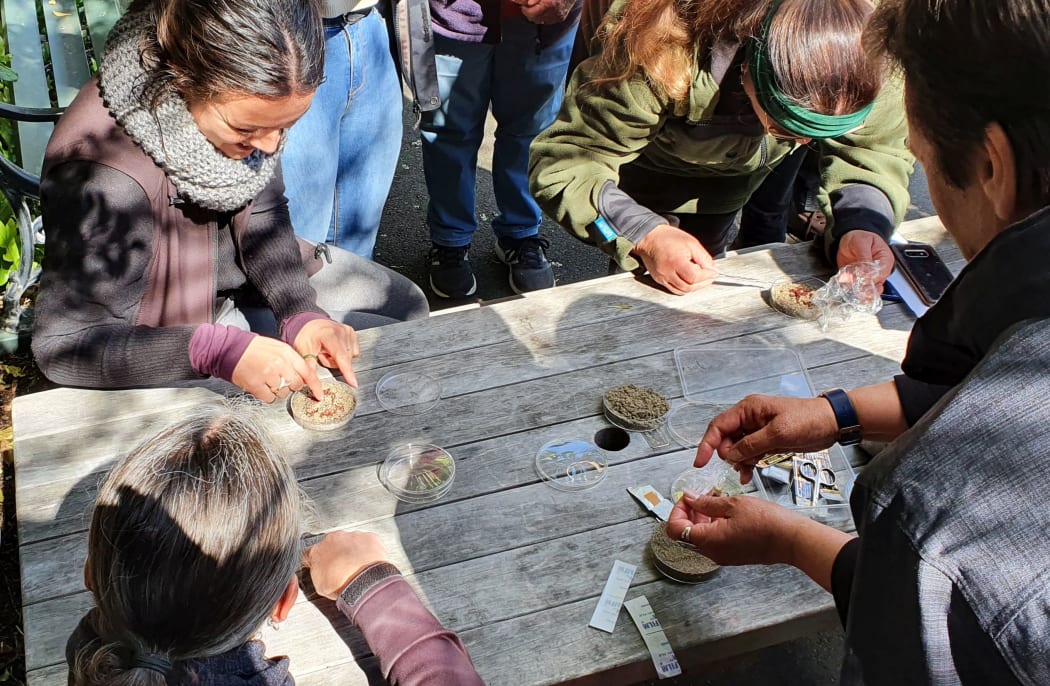
People gather around a table to prepare Dactylanthus seeds for planting. Photo: RNZ / Alison Ballance
The translocation took place in October 2020.
A group of iwi representatives and conservation staff from Wellington City Council and Zealandia Te Māra a Tāne ecosanctuary went to Pureora Forest to meet the iwi kāinga (Ngāti Rereahu and Ngāti Maniopoto) and collect kākano or seeds.
Hundreds of seeds were then planted at several sites at Otari-Wilton’s Bush and Zealandia.
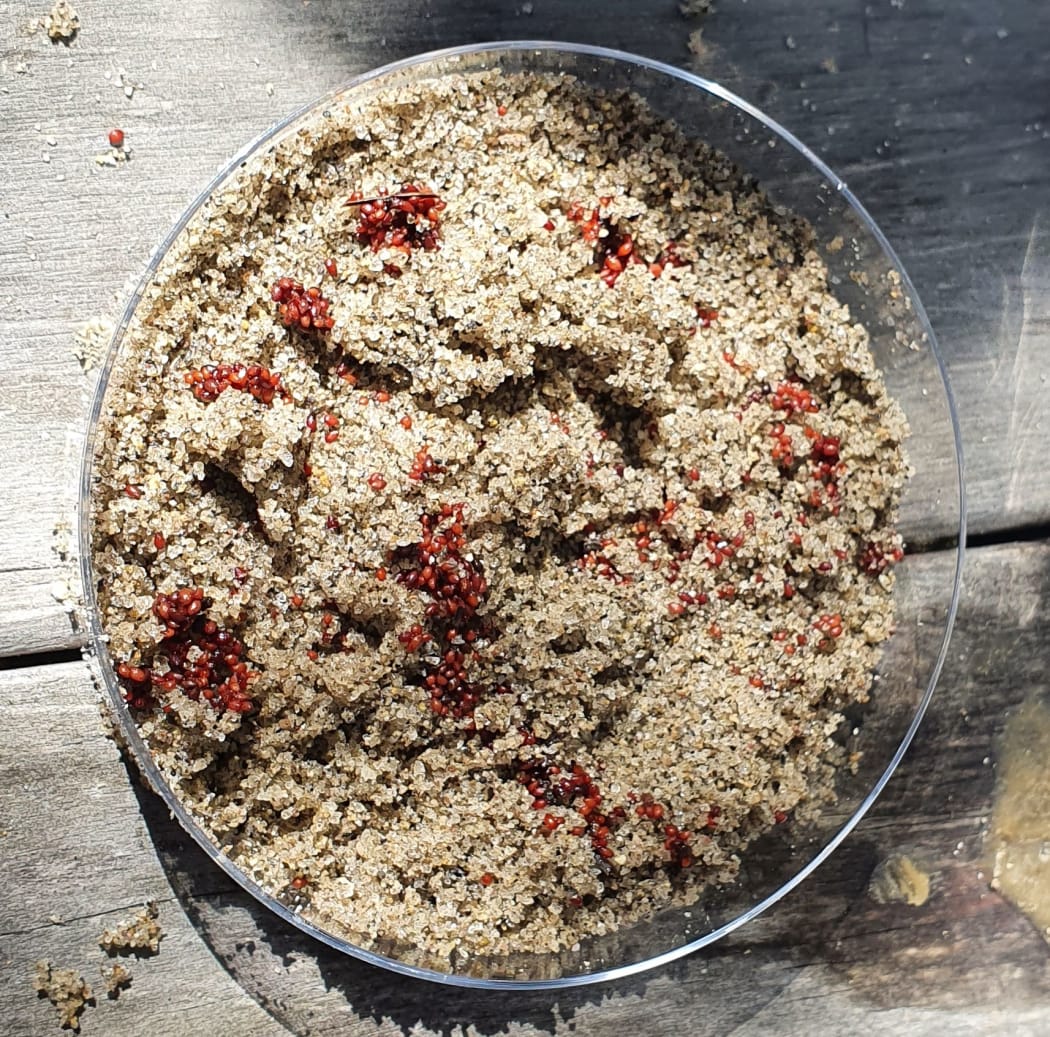
Deep red Dactylanthus seeds are mixed with sand, ready for planting. Photo: RNZ / Alison Ballance
Sharlene Maoate-Davis (Ngati Toa Rangatira, Ngati Wehiwehi, Ngati Huia, Taranaki tuturu, Te Atiawa) says “it’s a new love affair that’s developed here with te pua o te Rēinga.”
She says that a lot of Wellington iwi trace their ancestry back to Taranaki, where there are still natural populations of the plant.
“So [te pua o te Rēinga is] kind of reconnecting all the dots together, that’s what I think it’s doing,” says Sharlene.
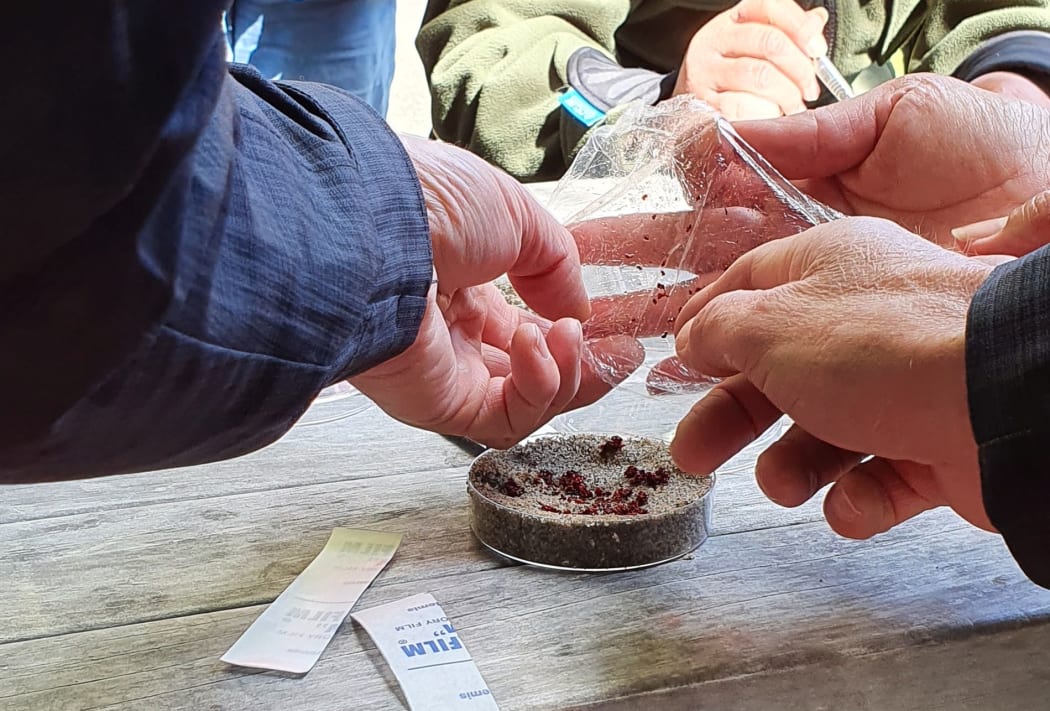
Many hands make light work, as Dactylanthus seeds are prepared for planting Photo: RNZ / Alison Ballance
We won’t know for at least five years whether the seeds have successfully germinated and formed an attachment to a suitable tree root.
In the meantime, photographer and Dactylanthus expert David Mudge has some words of advice, based on an unusual aspect of the plant’s biology.
“Keep planting them. You’ve got to get these mixed age populations.”
“When they first establish and flower they are all female,” says David. “When they age and are getting ready to die they are all male flowers.”
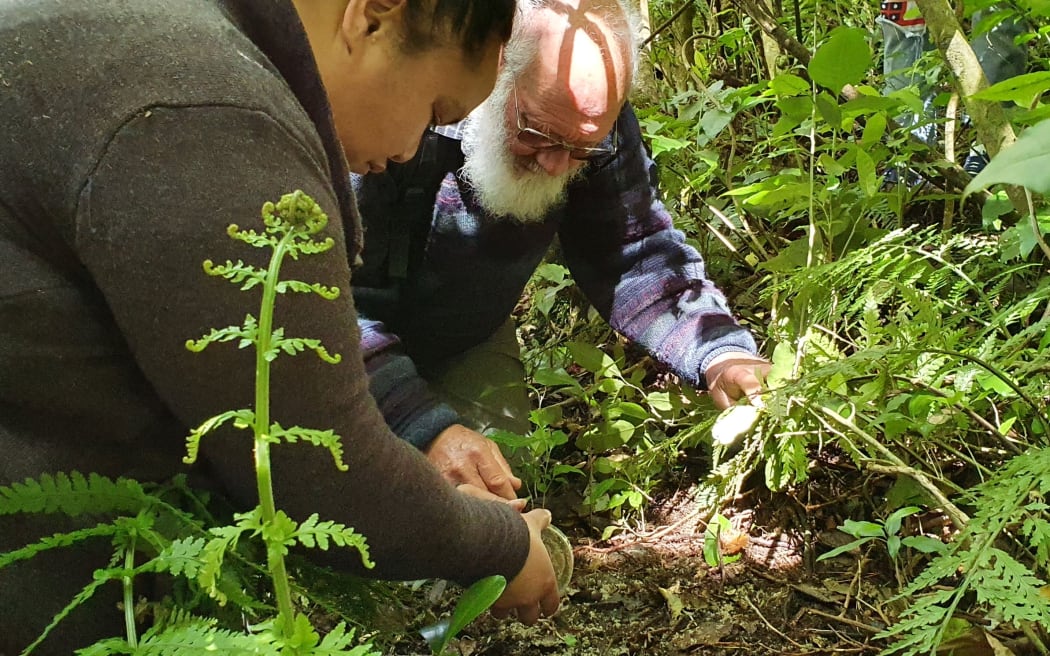
Nature photographer David Mudge helps plant Dactylanthus seeds at Zealandia ecosanctuary in Wellington. Photo: RNZ / Alison Ballance
David says the translocation is happening in the nick of time. Although there are small but strong populations of the plant in Pureora Forest, he says he has witnessed the disappearance of many other isolated populations.
He believes the future of the plant relies on growing iwi interest and management.
For example, with no local bats in Wellington to fulfil the task of pollinating, David says the plant will need to be hand-pollinated for the foreseeable future.
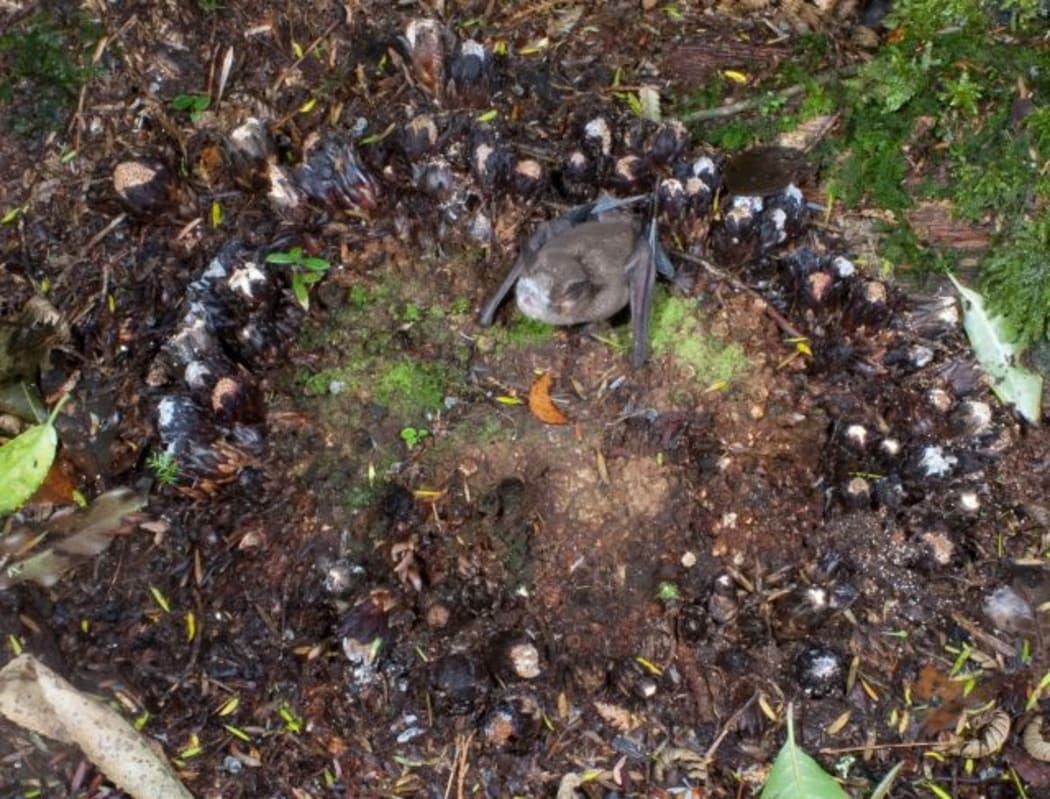
A short-tailed bat, with its face covered in pollen, on the edge of a large 'fairy ring' of flowers surrounding a large Dactylanthus tuber. Photo: Nga Manu Trust / David Mudge
Zealandia’s Bicultural Engagement Lead Ranger, Terese McLeod (Taranaki Whānui), says she is “engaged and seduced” by te pua o te Rēinga.
“Every time I learn a new thing it leads me down a path to learn many more things.”
“We’ve got these tiny seeds,” says Terese, “but they’ve got a huge world of potential in them.”
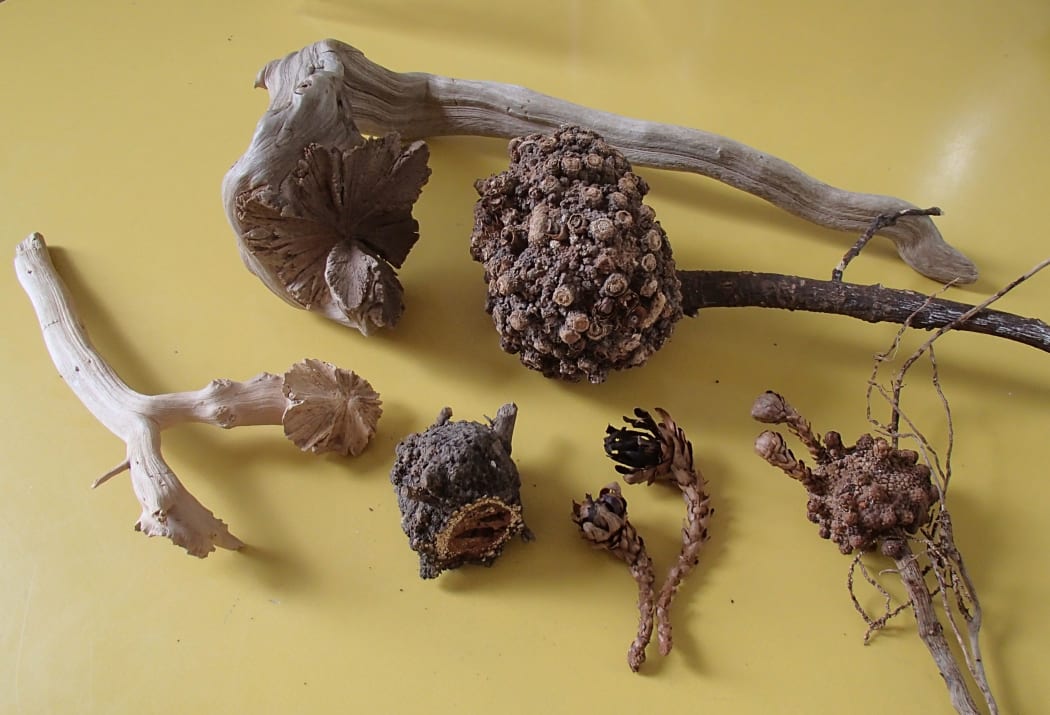
A collection of dried Dactylanthus flowers, the plant's warty underground tubers, and 'wood roses', which form where the parasitic plant connects with the root of the host tree. Photo: RNZ / Alison Ballance
Listen to the full podcast to hear more about Pua o te Rēinga and the seed planting day.
To find out more about this mysterious underground parasite and its relationship with peka peka, the bat, listen to this story recorded in Pureora Forest with experts David Mudge and Avi Hozapfel: Flower of the underworld – a parasitic treasure.
To hear about the translocation of another parasitic plant – mistletoe – to Zealandia check out this Our Changing World story: Mistletoe rescue mission.
Wellington iwi were also involved in the translocation of kākahi or freshwater mussels to a lake in Zealandia sanctuary: Mussels on the move.


